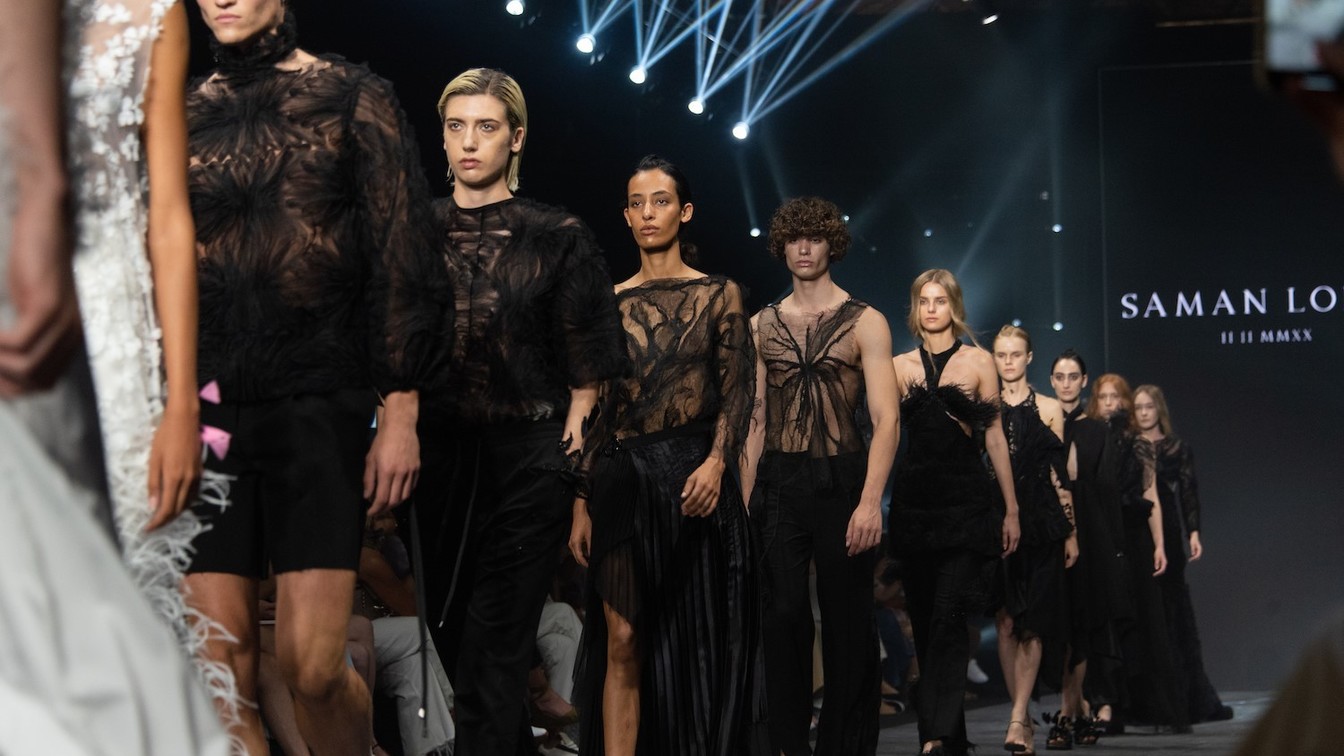

Rome and fashion: a duo that remain inseparable, despite all kinds of obstacles. These were the words of Silvia Venturini Fendi, president of Altaroma and organizer of the 42nd edition of ‘Rome Fashion Week’ (January 31 – February 2): three days packed with fashion shows and events to introduce independent brands and emerging designers, with the hope of paving the way for new talent towards international success.
“Today, we inaugurate ‘Showcase’ (created by Altaroma to present the collections to the public and buyers) with 60 new proposals, 33 of which are presenting the collection for the first time in Rome,” began the manager, third generation representative of the Fendi dynasty, founded by her grandparents more than 90 years ago. “This underlines the importance of scouting for the success of the event, and the extent to which Rome has become in recent years the point of reference and the place where you can launch your own work: it is acknowledged that, here, there is a virtuous path that allows you to take your first steps and then to take off and fly.”
What are the new generation of Italian designers inspired by?
“Sustainability is inherent in every new brand. It is the historic companies that have had to adapt to the transformation. The brands that are starting out today already have the prerogatives of sustainable production, ethics and circularity. I would like to point out that, in this edition of Altaroma, there are many companies headed by women. I think it's an important sign of the times.”
Many collections are inspired by gender fluidity. As you come from a traditional luxury brand, how do you judge this novelty?
“Gender fluidity is not a novelty; it is a transformation of customs and society. For years, we women have appropriated men's clothing, and it is interesting that this now happens in both directions. In the men's collections, there is a great openness to creativity: there are no more diktats, nor barriers. Many brands have unisex collections, and this brings the two genders together, so I see more and more girls shopping in the menswear departments and guys shopping in the womenswear departments.”
What are the most popular fabrics in the creations on show at Altaroma?
“Today, companies invest a lot in the research of natural fibers: there are great innovations, but also reinterpretations of fabrics shelved in past years, for example hemp. This fabric, Italian par excellence, is making a big comeback in fashion. In general, I can say that Italian fabrics are wonderful; our supply chain is one of the most important in the world, if not the most important. I would also like to point out that the modern artisan dressmaker no longer cuts everything by hand, but uses CAD and laser beams. Try visiting a clothing or leather goods factory, it’s like entering NASA. Some jobs necessarily require manual skills; otherwise, technology features very heavily in artisan fashion.”
Fashion, art and culture: what is the relationship between these sectors?
“They are communicating vessels; they take inspiration from each other. The Fendi family has always liked working with the avant-garde and bringing it together with the creative contexts found in the city. We have often opened and displayed collections both in historic buildings and museums, but also in art galleries, 'scouting' places in Rome that are sometimes forgotten and generating dialog among creative minds.
The future of Altaroma includes the transformation into a Foundation to ensure a more stable structure more open to new investors and sponsors.
“The transformation processes announced in July turned out to be longer than expected. I am confident that the institutions that have supported Altaroma up to now at a national level – such as the Italian Trade and Investment Agency (ICE) and the Ministry of Foreign Affairs and International Cooperation (MAECI) – and at a local level – such as the Regional Authority, the Chamber of Commerce and more recently also the Municipal Authority – will strengthen their collaboration in the future and find that fundamental unity of intent which is the essential ingredient that was previously lacking in Altaroma, holding back its full evolution.”